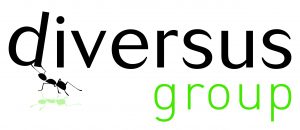
Diversus Group’s CTO Test Drives Zerto
Zerto is one of those vendors that I have been aware of for a while and has been in our “need to get to that and evaluate” pile for a while now. It was put into that pile for two reasons:
- The Zerto elevator pitch did make sense when I heard it
- As we have been working through and carefully crafting out the Diversus Group (DG) Hybrid Cloud framework over the last few years (with select vendors), this sounded like something that could help us help our customers.
However, as we all know in this game, marketing sometimes gets ahead of itself and the devil is in the detail. White papers and clouds on a whiteboard connected with lines are great, but until we at DG see and experience the vendors widget performing the function it claims it can do in the way they claim it can do it – well it’s just all that isn’t it, claims.
At the end of October 2018, I got to the evaluation pile and decided to put Zerto through its paces to assess the Zerto marketing claims. Engaging with Lou Sassani, ANZ Zerto Systems Engineer, was painless as I explained to him how we work and within four hours of requesting, I had my demo licenses and access to the Zerto portal.
As mentioned, at DG we will assess each vendor’s claims we work with and expect our customers to do the same with us. To back up our claims, we have built and run our own Hybrid Cloud that is architected to the same framework we would deploy for a customer.
So, the Zerto evaluation –
- 4pm: Started poking around the portal downloading the version of Zerto for VMWare and deployed that into our private cloud which seemed like the logical place to start. I managed to do that with very little fuss. The wizard walked me through deploying with vCenter connectivity and the vSphere hosts configuration. After that, Zerto could see my virtual machines. What now? How about I try and “DR” a test guest into Azure?
After flipping through the portal documentation, I discovered that you needed to deploy Zerto instances into each cloud you want to replicate data across. Makes sense so let’s do that.
- 5pm: I downloaded the version for Azure, deployed that into our Azure environment and again walked through the wizard to set it up. Seemed logical that I needed to connect the VMWare Zerto instance with the Azure Zerto instance. I clicked “connect sites” through the Zerto GUI and that was done.
- 6pm: What’s next? Let’s replicate! I selected my test machine from VMWare to configure “disaster recovery (DR)” to Azure. I ran through the wizard that asked what and where things will go into Azure and when finished, I pressed the go button. Replication from VMware to Azure kicked off. The steps and current status were very easy to follow via the Zerto GUI.
- 6:45pm: I finished replicating my test VM with 80TiB of data into Azure – next logical step is to press the failover button and see what happens.
- 7:00pm: No surprises here, but the machine failed over and came up with all the Azure parameters I set during setup. Done.
Am I saying you can deploy a hybrid cloud architecture in three hours? No, as this was already architected, designed, deployed and fully operational.
Is the point here the speed that I managed to deploy Zerto, not entirely (although it is impressive) as it was only 1 VM.
But it is testimony to the ease and intuitiveness of the Zerto product with a seamless user interface, combined with a properly architected, deployed and managed Hybrid Cloud Framework that has allowed someone with very little keyboard time these days (i.e. Me as current CTO) to get Zerto up, configured and running with a machine “DR” across a hybrid cloud within three hours. Don’t forget I have never seen or used the product before!
While I did do some fast reading from the portal working my way through this, it felt the like the process pretty much drove itself and with all that I have to say Zerto has passed most of the claims test for me.
I look forward to working with Zerto more as part of the DG Hybrid Cloud framework.
– Matthew Agoni, Chief Technology Officer
Melbourne based Diversus Group (DG) Chief Technology Officer Matthew Agoni has 20 years’ experience in the ICT industry. Matthew was the first employee at DG at its inception in October 2006 and leads the solution architect(s) and consulting teams. With his team DG have crafted a hybrid cloud framework that help customers with their transition from traditional ICT models to next generation technologies. Follow Matthew on LinkedIn.



